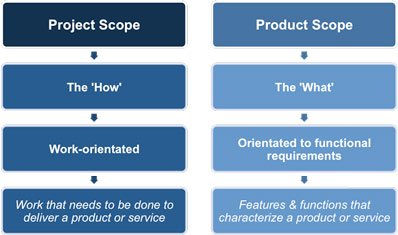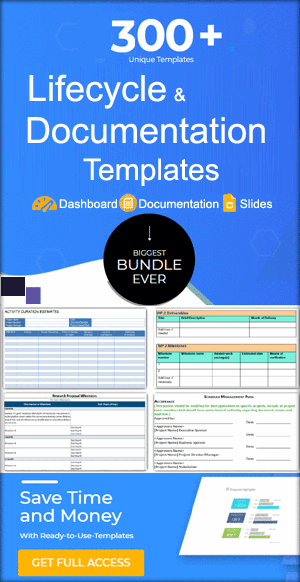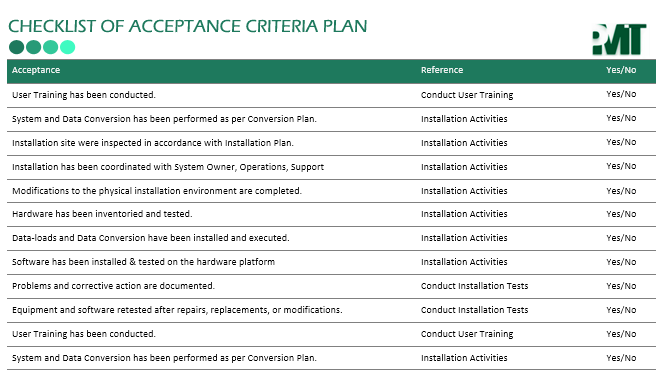Business Requirement Management Plan Template

The Requirement Management Plan template is a kind of tool that analyses and examines the needs and requirements of the project. It runs alongside the main project plan and is of great significance and vital for the project to succeed.
The reason for using this tool is to make sure project requirements are fulfilled properly and everything is aligned according to the need of the project. It also ensures the stakeholders are well managed and addressed about the important information on time.
As Requirements Management tools and templates are popular and extensively used they are available in many different formats, all you need to pick one according to the need of a project.
Business Requirement Management Plan Template is a vital document that outlines the approach and strategies for effectively managing business requirements throughout a project’s lifecycle.
This comprehensive plan serves as a blueprint, guiding project teams, stakeholders, and decision-makers in understanding and meeting the specific needs of the business.
The template typically includes various key sections, such as an introduction explaining the purpose and scope of the plan, the roles and responsibilities of individuals involved in the requirements management process, and the overall timeline and milestones for requirement gathering, analysis, and validation.
Check out Project Cost Estimation Template in Excel as a Related Template.
What is Requirement Management Plan According to PMP?
For the success of the project manager needs to make sure to plan the requirements of the project right from the starting point. Moreover, as the project progress, some changes may occur, and according to that the requirements and need of the project also vary.

Therefore, it is needed to review and update the Requirement Management Plan regularly after some time intervals. Hence to reflect the changes the requirements must be addressed smarty to ensure smooth execution and running of the project.
Moreover, it is a tool by which you can ensure the timely completion of the project as it makes sure e that the needs of the project are addressed and fulfilled on time without delay. In simple words, a Requirement Management Plan is helpful in measuring, scrutinizing, reporting, and monitoring the project necessities.
Furthermore, the project manager is the one responsible for making RMP and making sure it is implemented and executed properly.
In this article, we will see Requirement Management Plan and how it work breakdown. We will also discuss how we create one and how it is effective in managing a project effectively.
Related Template: Production Schedule Template
Component of Requirement Management Plan Template
Basically, Requirements management planning is the method of recording, analyzing, tracing, and listing project-related requirements. Quality control is associated with this and conduct verification procedures to make it possible to meet project needs.
The following are some important components of the requirements management plan:
- The requirement activities tracking
- Documenting and configuring project tasks and changes
- Reporting of changes and related requirements
- The process needs to fulfill the requirement of prioritization
- Identification structure plan used to mirror which requirement is desired after which change management.
How to Create a Requirement Management Plan Template
The requirements management plan is a significant component of project management and planning. This allows you to have a better idea of how the project management requirements should be analyzed and managed properly.
Without a Requirement Management Plan, you can easily get a lot and de-track. Thus, make sure this tool is part of your overall project planning process.

Now let’s have a look at how we make a Requirement Management Plan;
- First, you need to gather all the information related to the project scope and get it documented properly.
- Then have an account of the data about the RMP and define all the possible approaches and methods.
- Identify the stakeholders by arranging meetings and have the data well documented.
- Make a priority list of the project needs and requirements.
- Make a way of tracking and identifying the project requirements.
- As you have collected all the data last step is the execution of the plan according to the data gathered.
Related Content: Product Backlog Template in Excel
Scope Management Vs Requirement Management
The scope covers the information about the tasks and requirements. Whereas the requirement is a slightly different concept as it encompasses the specifications and results after doing changes according to the project needs.

Scope management is the track and of the feasibility and reliability of the project. On the other hand, requirements management is the needs of the project which need to be attained and fulfilled after a change in the project.
The requirements management plan is for stakeholder and project deliverables documentation and management.
And the scope managing plan is for the details of the actions required to take to reach the finish line successfully. Consequently, both plans are interlinked and a must-have for the project to thrive and run well.
Significance of using Requirements Management
The project Management plan is helpful in making sure the resources are used properly and do not go to waste. It saves you a considerable amount of time and ensures the finance does not go to waste.
As the project manager has lost on his plate because he has to keep account of a variety of things in the project, this tool helps to reduce workload. Moreover, it also avoids wasting time and ensures the project’s accomplishments and achievements.
Related Article: Project Gap Analysis Template
Conclusion
As in the above discussion, we have seen how vital Requirement Management planning is and how it affects the overall project planning process. Consequently, to ensure the success of the project make sure you have a professional requirement plan included in your project plan.
Business Requirement Management Plan Template emphasizes the importance of traceability and validation, detailing how each requirement will be mapped to specific project deliverables and how their successful implementation will be measured.
It may also include a risk management strategy to address potential challenges that could arise during the requirement gathering and implementation phases. Lastly, the template typically concludes with a review and approval process, ensuring that all stakeholders agree on the final set of requirements before proceeding with project execution.
In addition, for more information you can contact Project Management Tools support team.








